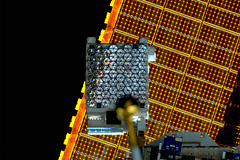Astronomers have made detailed observations of the magnetar SGR 1830-0645 from the ISS
An international group of astronomers made observations of the magnetar SGR 1830-0645 using the NICER instrument (Neutron Star Interior Composition ExploreR) on board the ISS. Preliminary results of the study are published in the arXiv preprint repository.
SGR 1830-0645 was discovered on October 10, 2020, when NASA's Swift spacecraft recorded a short gamma-ray burst from the galactic plane. Subsequent observations of the flare showed that it was generated by a previously unknown source of X-ray radiation. Upon further examination, the researchers revealed pulsations with a period of 10.4 seconds, a deceleration rate of about 0.09 picohertz per second, as well as numerous short X-ray bursts. This indicates that SGR 1830-0645 is a magnetar. More detailed observations using NICER have shown that the profile of the magnetar pulse at the beginning of the flare has a complex morphology with three distinct peaks. The scientists specified the rotation frequency, which was approximately 0.096 hertz, and the deceleration rate of 0.062 picohertz per second. Thus, the magnetar has a dipole field strength at the equator at the level of 270 trillion gauss. The age of the object reaches 24.4 thousand years, and the loss of rotational energy is 0.24 decillion erg per second.
Magnetars are a type of neutron stars with an extremely strong magnetic field that is more than a quadrillion times stronger than the Earth's magnetic field.

